Large-Scale SLA Comes to North America via RPS
British stereolithography system manufacturer RPS has begun introducing its large-scale 3D printer to North America. While the company first introduced us to the NEO800 in 2016, this is its first sale in the U.S. The first customer is Midwest Prototyping, a service bureau based in Wisconsin.
The NEO800 gets its name from its 800 x 800 x 600 mm build envelope, on the large end of vat photopolymerization systems on par in terms of scale with the RSPro800 from UnionTech, Prodways’ MOVINGLight series, the Rapid Meister ATOMm 8000 from CMET, 3D Systems largest machines, and several others. The machine also relies on an open resin system, meaning that it is not limited by the use of proprietary resins. For Midwest Prototyping’s use of the NEO800, Dutch chemical company DSM has been selected as the material provider. Customers could buy and use other resins, however.
Since the system was launched in 2017, the company has made steady progress in expanding its presence. Large customers such as Clarks Shoes acquired one earlier this year for prototyping footwear designs. Meanwhile, RPS has been involved in significant activity in the world of high-performance automobiles. Specifically, Briggs Automotive Company used Malcolm Nicholls Limited to produce parts with the large-scale printer for its BAC Mono R supercar. The Oxford Brookes Racing (OBR) Formula Student racing steam also used the system for its 2019 vehicle.
Given the size of the machine, it makes sense that it would be the tool of choice for service bureaus, which produce large batches of part at once. While one of the industry’s oldest service bureaus, Materialise, uses its massive Mammoth 3D printing systems in-house, smaller or newer businesses have access to larger machines via companies like RPS, which is why service firms such as Ogle Models & Prototypes in the U.K. and One3D in the Czech Republic turned to the NEO800.
As the company extends beyond Europe and into the U.S., it has also continued its partnership with DSM. DSM materials have routinely been selected for use with the NEO800 in the aforementioned projects. In 2019, RPS and DSM formed the TriCollective, a method for companies without the knowledge or capital resources to lease in 3D printing hardware and materials. This is one of many partnerships with smaller firms that DSM has made, which also include Origin and Inkbit.
For its own technology, RPS uses the NEO Material Development Kit, a polymer research and development tool that allows material developers to test new resins for NEO systems using a one liter vat, single layer exposure panes and RPS’s Titanium software. This allows them to determine the necessary exposure time and material formulations before moving on to a larger 13-liter system.
The fact that RPS relies on an open materials approach to its SLA technology is representative of the larger trend away from hardware-specific materials in the industry as a whole. While early stalwarts like 3D Systems and Stratasys have sold their materials directly to customers, the open materials approach allows newer machine manufacturers entry into the marketplace as customers look to them for lower cost feedstock options. In turn, this gives companies like DSM a greater footprint, while expanding the adoption of 3D printing across industries.
While RPS continues to grow, it and every other manufacturer of SLA technology will have to look over their shoulders for competitors working on large-scale, continuous-DLP technology, such as Azul.
The post Large-Scale SLA Comes to North America via RPS appeared first on 3DPrint.com | The Voice of 3D Printing / Additive Manufacturing.
3D Printing Industry News Sliced: Nano Dimension, Protolabs, Lockheed Martin, CRP, Prusa, Siemens
3D Printing News Briefs: October 6, 2019
We’ve got lots of material news for you in today’s 3D Printing News Briefs, starting with a Material Development Kit from RPS. Polymaker and Covestro are releasing three new materials and EOS has introduced a new TPU material for industrial 3D printing. Moving on, CASTOR and Stanley Black & Decker used EOS 3D printing to reduce costs and lead time, and Velo3D is partnering with PWR to make high performance heat exchangers.
RPS Introduces Material Development Kit for NEO800
 UK 3D printer manufacturer RPS just launched its NEO Material Development Kit, which was designed by company engineers to be used as a polymer research and development tool for its NEO800 SLA 3D printer. The MDK comes in multiple platform and vat sizes, and allows developers to work with different resin formulations, so that R&D companies can work to develop a range of polymers that are not available in today’s industry. Users can print single layer exposure panes with Titanium software and the 1 liter vat in order to find the photo-speed of the formulation they’re developing; then, tensile testing of different material formulations can commence. Once this initial testing is finished, developers can scale up to the 13 liter vat – perfect for 3D printing prototype parts for use in optimizing final configuration settings.
UK 3D printer manufacturer RPS just launched its NEO Material Development Kit, which was designed by company engineers to be used as a polymer research and development tool for its NEO800 SLA 3D printer. The MDK comes in multiple platform and vat sizes, and allows developers to work with different resin formulations, so that R&D companies can work to develop a range of polymers that are not available in today’s industry. Users can print single layer exposure panes with Titanium software and the 1 liter vat in order to find the photo-speed of the formulation they’re developing; then, tensile testing of different material formulations can commence. Once this initial testing is finished, developers can scale up to the 13 liter vat – perfect for 3D printing prototype parts for use in optimizing final configuration settings.
“This NEO Material Development Kit now opens the door for large industrial chemical companies such as BASF, DSM and Heinkel to push the boundaries of UV photopolymers,” said David Storey, the Director of RPS. “The industry is looking for a quantum jump in materials to print end-user production parts from the stereolithography process.”
New Polycarbonate-Based Materials by Polymaker and Covestro
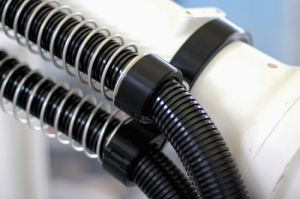 Advanced 3D printing materials leader Polymaker and polymer company Covestro are teaming up to launch three polycarbonate-based materials. These versatile new materials coming to the market each have unique properties that are used often in a variety of different industries.
Advanced 3D printing materials leader Polymaker and polymer company Covestro are teaming up to launch three polycarbonate-based materials. These versatile new materials coming to the market each have unique properties that are used often in a variety of different industries.
The first is PC-ABS, a polycarbonate and ABS blend which uses Covestro’s Bayblend family as its base material. Due to its high impact and heat resistance, this material is specialized for surface finishings such as metallization and electroplating, so it’s good for post-processing work. Polymaker PC-PBT, which blends the toughness and strength of polycarbonate with PBT’s high chemical resistance, is created from Covestro’s Makroblend family and performs well under extreme circumstances, whether it’s subzero temperatures or coming into contact with hydrocarbon-based chemicals. Finally, PolyMax PC-FR is a flame retardant material that’s based in Covestro’s Makrolon family and has a good balance between safety and mechanical performance – perfect for applications in aerospace motor mounts and battery housings.
EOS Offers New Flexible TPU Material
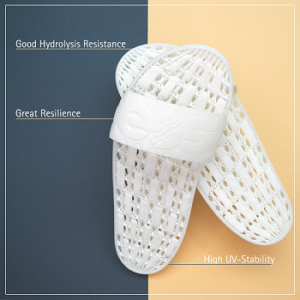 In another materials news, EOS has launched TPU 1301, a new flexible polymer for industrial, serial 3D printing. Available immediately, this thermoplastic polyurethane has high UV-stability, great resilience, and good hydrolysis resistance as well. TPU materials are often used in applications that require easy process capabilities and elastomeric properties, so this is a great step to take towards 3D printing mass production.
In another materials news, EOS has launched TPU 1301, a new flexible polymer for industrial, serial 3D printing. Available immediately, this thermoplastic polyurethane has high UV-stability, great resilience, and good hydrolysis resistance as well. TPU materials are often used in applications that require easy process capabilities and elastomeric properties, so this is a great step to take towards 3D printing mass production.
“The EOS TPU 1301 offers a great resilience after deformation, very good shock absorption, and very high process stability, at the same time providing a smooth surface of the 3D printed part,” said Tim Rüttermann, the Senior Vice President for Polymer Systems & Materials at EOS. “As such the material is particularly suited for applications in footwear, lifestyle and automotive – such as cushioning elements, protective gears, and shoe soles.”
You can see application examples for TPU 1301 at the EOS booth D31, hall 11.1, at formnext in Frankfurt next month, and the material will also be featured by the company at K Fair in Dusseldorf next week.
CASTOR, Stanley Black & Decker, and EOS Reduce Costs and Lead Time
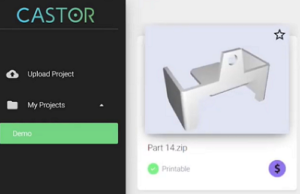 Speaking of EOS, Stanley Black & Decker recently worked with Tel Aviv startup CASTOR to majorly reduce the lead time, and cost, for an end-use metal production part that was 3D printed on EOS machinery. This was the first time that 3D printing has been incorporated into the production line of Stanley Engineered Fastening. In a CASTOR video, EOS North America’s Business Development Manager Jon Walker explained that for most companies, the issue isn’t deciding if they want to use AM, but rather how and where to use it…which is where CASTOR enters.
Speaking of EOS, Stanley Black & Decker recently worked with Tel Aviv startup CASTOR to majorly reduce the lead time, and cost, for an end-use metal production part that was 3D printed on EOS machinery. This was the first time that 3D printing has been incorporated into the production line of Stanley Engineered Fastening. In a CASTOR video, EOS North America’s Business Development Manager Jon Walker explained that for most companies, the issue isn’t deciding if they want to use AM, but rather how and where to use it…which is where CASTOR enters.
“They have a very cool software in which we can just upload the part of the assembly CAD file, and within a matter of minutes, it can automatically analyze the part, and give us the feasibility of whether the part is suitable for additive manufacturing or not. And in case it is not suitable, it can also let us know why it is not suitable, and what needs to be changed. It can also tell us what is the approximate cost, which material and printer we can use,” said Moses Pezarkar, a Manufacturing Engineer at Stanley’s Smart Factory, in the video.
To learn more, check out the case study, or watch the video below:
PWR and Velo3D Collaborating on 3D Printed Heat Exchangers
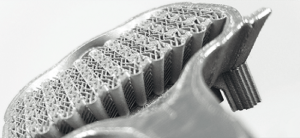 Cooling solutions supplier PWR and Velo3D have entered into a collaborative materials development partnership for serial manufacturing of next-generation heat exchangers, and for the Sapphire metal 3D printer. PWR will be the first in the APAC region to have a production Sapphire machine, which it will use to explore high-performance thermal management strategies through 3D printing for multiple heat exchange applications. Together, the two companies will work on developing aluminum alloy designs with more complex, thinner heat exchange features.
Cooling solutions supplier PWR and Velo3D have entered into a collaborative materials development partnership for serial manufacturing of next-generation heat exchangers, and for the Sapphire metal 3D printer. PWR will be the first in the APAC region to have a production Sapphire machine, which it will use to explore high-performance thermal management strategies through 3D printing for multiple heat exchange applications. Together, the two companies will work on developing aluminum alloy designs with more complex, thinner heat exchange features.
“PWR chose Velo3D after extensive testing. The Velo3D Sapphire printer demonstrated the ability to produce class-leading thin-wall capabilities and high-quality surfaces with zero porosity. Velo3D and PWR share a passion for pushing the limits of technology to deliver truly disruptive, class-leading, products. We are a natural fit and look forward to building a strong partnership going forward,” said Matthew Bryson, the General Manager of Engineering for PWR.
“Heat exchanger weight and pressure-drop characteristics have a huge impact on performance and are significant factors in all motorsport categories. Using additive manufacturing to print lightweight structures, enhancing performance with freedom-of-design, we have the ability to further optimize these characteristics to the customer’s requirements whilst providing the necessary cooling. The broad design capabilities and extremely high print accuracy of the Velo3D Sapphire 3D metal printer will help us optimize these various performance attributes.”
Discuss these stories and other 3D printing topics at 3DPrintBoard.com or share your thoughts in the comments below.
The post 3D Printing News Briefs: October 6, 2019 appeared first on 3DPrint.com | The Voice of 3D Printing / Additive Manufacturing.
RPS launches NEO Material Development kit for polymer R&D on the NEO800
OBR races for first place with RPS 3D printing
Interview With Steve Moran of Stereolithography Company RPS Limited
When I first heard from an F1 team that they were using an SLA machine made in the UK I was a bit confused. What was this mysterious RPS company? What did they do? How were they able to make and deliver specialized resins? Tucked away in Buckinghamshire in a 53,000 person town with a Roald Dahl kids museum, RPS Limited manufactures SLA systems that are widely used in many niche manufacturing applications. For over a decade the firm has serviced machines and now makes it’s own as well, the NEO while the firm also resells HP MFJ systems and others. RPS is a hybrid of a company that is an OEM, reseller and service company in one. They’re also real SLA nerds and are magicians in creating specialized 3D printing applications for manufacturing using photopolymers and powders. They’re a highly experienced team that routinely solves some very exciting materials and manufacturing challenges for the most demanding of customers. We interviewed RPS’ Steve Moran to find out more.
What is RPS?
We are an industrial 3D printing specialist, based in Aylesbury, UK. The company was founded in 2008 initially servicing and supporting customers who owned existing 3D printing systems. The company has since developed its own industrial 3D printing equipment (NEO800) and grown to become a leader in industrial 3D printing technology and service support. RPS also resell other well-known industrial 3D printing brands providing materials, hardware and software.
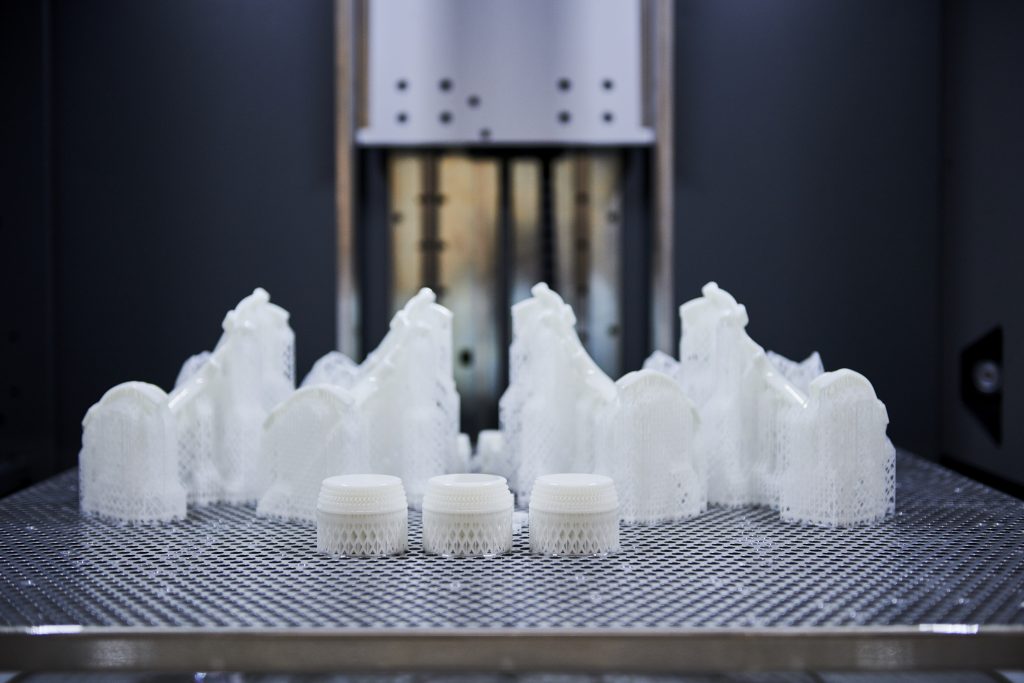
How did you get started in 3D printing?
In 1994 the industry was known as Rapid Prototyping. I was employee number five at 3D Systems in the UK where I was a Customer Support Engineer. After five years at 3D Systems, I decided to offer customers an alternative source of support, upgrades to their SLA machines and alternative materials.
Why should people work with you?
3D printing is a technology that is driving change in manufacturing and design across a range of industries. RPS has a huge resource of skilled people with 150+ years of 3D printing knowledge between them. We are making an impact in our customers’ businesses and fast becoming a market global leader in industrial 3D printing.
The team at RPS are offered opportunities to develop their role and are given the autonomy to make a difference within the company. This again has a benefit for end users, as employees are highly motivated and enjoy their chosen role. We offer fantastic work packages, benefits, training and the ability to have a flexible working pattern when necessary, to suit modern family life.

What is the 3D printing market like in the UK?
I see the three main segments driving the UK market as being F1, Automotive and Bureaux with manufacturers also looking to adopt and add capability in house.
CNC companies and Jigs and Fixture manufacturers are starting to adopt 3D printing as they are now understanding the benefits of additive vs subtractive manufacturing, which are cost, time and weight savings. Companies are also able to develop detailed parts that you can’t manufacture traditionally, and also able to get their products to market faster.
This has been driven by the new and innovative materials (both resin and powder), that are now available which helps customers look at changing to 3D printing and adapt to an additive manufacturing method. Customers can also choose from a range of 3D printing technologies that now build parts with greater accuracy with the desired mechanical properties to suit their application than in the past.
Which segments are growing?
We are seeing more companies wanting speciality material to be used for specific applications. An F1 customer approached us to help them create a new, black glass filled material. Working with ALM (Advanced Laser Materials, a subsidiary of EOS), we helped customise and formulate a laser sintering powder to achieve the mechanical properties and colour required.
Although the range of 3D printing material options is growing, they still do not have the optimal properties to produce complete end-use parts, in particular with stereolithography.

What new 3D printing materials do you see making an impact?
We are excited about the manufacture of new photopolymers/resins that will be available in the market in the future. At the moment the lack of materials available with the mechanical properties needed for end-use part development is holding 3D printing back. The potential of new materials in the market can only happen with hardware to assist in this development, which is why we developed the NEO800 with an open resin platform. We have also recently developed the NEO Resin Development Kit to help customers with the development of these new photopolymers.
Everyone loves the accuracy and surface finish of stereolithography but the mechanical properties have always been lacking. This is starting to change with more investment by new suppliers in this market. It will be great to see end use parts in automotive with textures and finishes straight out of the equipment with little or no finishing.
The NEO resin development kit gives customers the platforms, calculation tools and software to help customers develop material easily. We have already been approached by material development companies wanting to use the NEO800 as a tool to develop their materials and have exciting ideas, so I am confident this this step-change in new materials with end-use mechanical properties will happen soon.
What advice would you give me if I were a company new to 3D printing?
3D printing offers a range of cost and time-saving benefits compared to traditional manufacturing. At RPS we provide advice and talk through what the customer is doing today. By looking at all their processes to manufacture products, we can advise where technologies fit, with which tasks etc. Only then can customers make informed decisions about how 3D Printing would work with their application. For example, would ceramic moulds via SL help to get an injection moulded product through the initial testing in real materials prior to tooling being made and commissioned? If so, look at stereolithography 3D printing technology. Or if you were looking at a small run of final production parts, possibly looking at HP’s Multi-Jet Fusion technology as it prints end-use parts with strong mechanical properties. You need to know what application you want to print and the technology you want to print from. Analyse the output of each technology and seek independent advice to weigh up the pros and cons of each.
What is currently exciting in SLS materials?
RPS provides a great range of ALM SLS materials that can suit applications ranging from automotive to footwear. For example, ALM’s HT-23 is a high heat deflection powder that can maintain mechanical properties up to 270 °C perfect for F1. Or there is the ALM FR-106 aerospace grade fire retardant Nylon 11, that exhibits superior mechanical properties and can withstand intense functional testing. In particular, the ALM 640-GSL gives customers a black glass filled material that is unlike any in the market. The glass spheres are lightweight and produce stiff parts, making the material perfect for F1, automotive and lightweight applications like drones.
When do I need a custom material?
Nearly every 3D printing application requires a custom material to meet the mechanical properties required. Every existing material out there is a comprise at the moment so the opportunity to formulate specific material (laser sintering) required through RPS and ALM is a great way to achieve this. In regards to SLA, we knew what customers wanted when servicing and supporting their hardware. One of these features was an open-platform to give customers this freedom of material selection. This is why we developed and manufactured our NEO800 with an open-resin platform, which gives customers an opportunity to develop their own materials.
Where are your customers using the HP machines?
Bureaus, end use part manufacturers, automotive and tooling manufacturers are just some of the industries that our customers belong to that use the HP Multi-Jet Fusion technology. It is a great, easy-to-use system to run small, end use parts which we actually utilise at RPS in house. Using the HP Multi-Jet Fusion we print the air-filter assembly used on our NEO800 system. This allows us to print a small run of parts when needed, saving time and costs. We also have a partnership with Oxford Brookes Racing. With the help of RPS, OBR18 built an engine intake plenum in Nylon 12 using HP’s Multi-Jet Fusion technology. 3D printing the plenum on HP’s MJF saved OBR over 50% in weight savings compared to the OBR18 car where they used aluminide. This is a great example of how the HP’s Multi-Jet Fusion 4200 is perfect for producing detailed, end use parts faster and at a lower cost than traditional manufacturing.
How has the development of photopolymers improved over the years?
Twenty years ago if you dropped an SLA part it would shatter. The first generation of polymers produced amber, brittle and inaccurate parts. The next generation has seen more durable and accurate parts due to epoxy chemistry. I can envision the next generation of photopolymers to mimic end-use parts. This is why we chose to manufacture an open-source stereolithography system to enable users to develop materials to achieve this.
How did you come to design and sell your own machine?
When we started RPS, the team focused on servicing and supporting customers with SLA and SLS hardware. During our time supporting customers we were listening to their needs and understood the limitations of some of the hardware that was available at that time. We felt that this was a great opportunity to use our engineering skills to develop stereolithography hardware that could produce outstanding parts, but in a system that was more user friendly.
What is different about it?
What makes the NEO800 different to many stereolithography systems is that it’s an open resin system which means it can utilise any 355 nm SL material. Companies are approaching us wanting to use the NEO800 for material development which is great news for the future of photopolymers in the industry. With our support background understanding of what customers wanted, we knew we had to develop software that was user friendly and adaptable to the needs of the customer, so we developed the NEO800 Titanium software. The NEO800 has a built-in camera to monitor builds, which can be adjusted during the print without a pause to see changes in the next layer. Mid-build, recoating build styles and part build styles can be changed, or parts and supports can be deleted. We always encourage customer feedback and try to incorporate any ideas that may be useful for our customer in our software updates. Example: The system is now able to export reports, detailing monthly builds, machines utilisation, resin consumption etc, which is really important to our end users. Because our software is written in-house we are able and willing to add these type of features and respond to our customers needs.
I’ve heard that it is used a lot in Formula 1?
Yes. Formula 1 requires accurate and smooth parts for wind-tunnel testing and prototyping that they achieve with the NEO800. They find the sidewall quality of the parts produced on the NEO a benefit as it reduces the post processing time by up to 50% and with the 800x800x600mm platform, it offers the size that they require.
Is it meant for production?
The NEO800 is mainly used for applications such as prototyping and model making, however the next generation of material development will change this. With new and innovative materials, users will have the capability to build end-use parts for production using stereolithography. When this material is available, it will open more doors and opportunities in manufacturing that can only be achieved with 3D printing.
